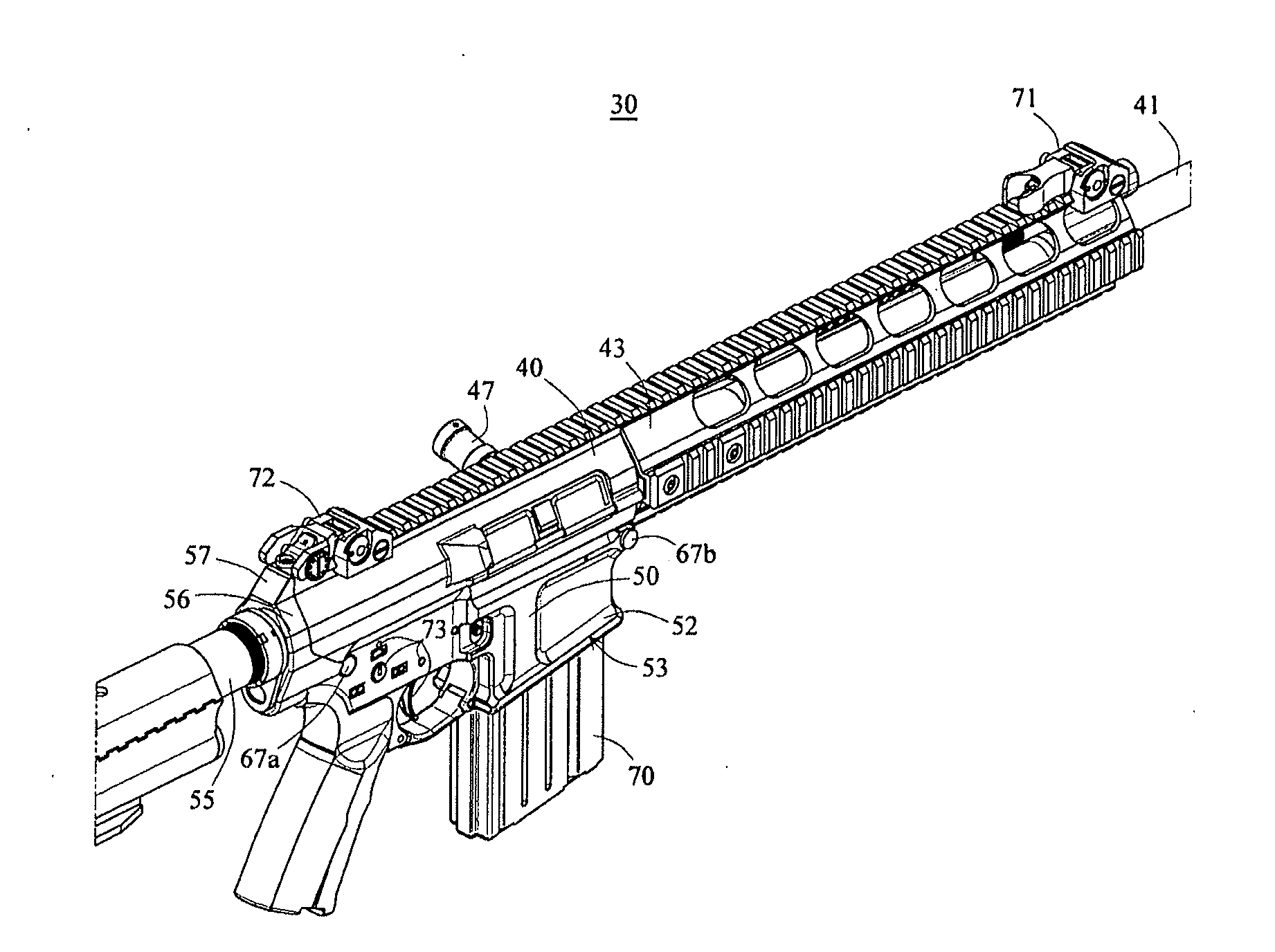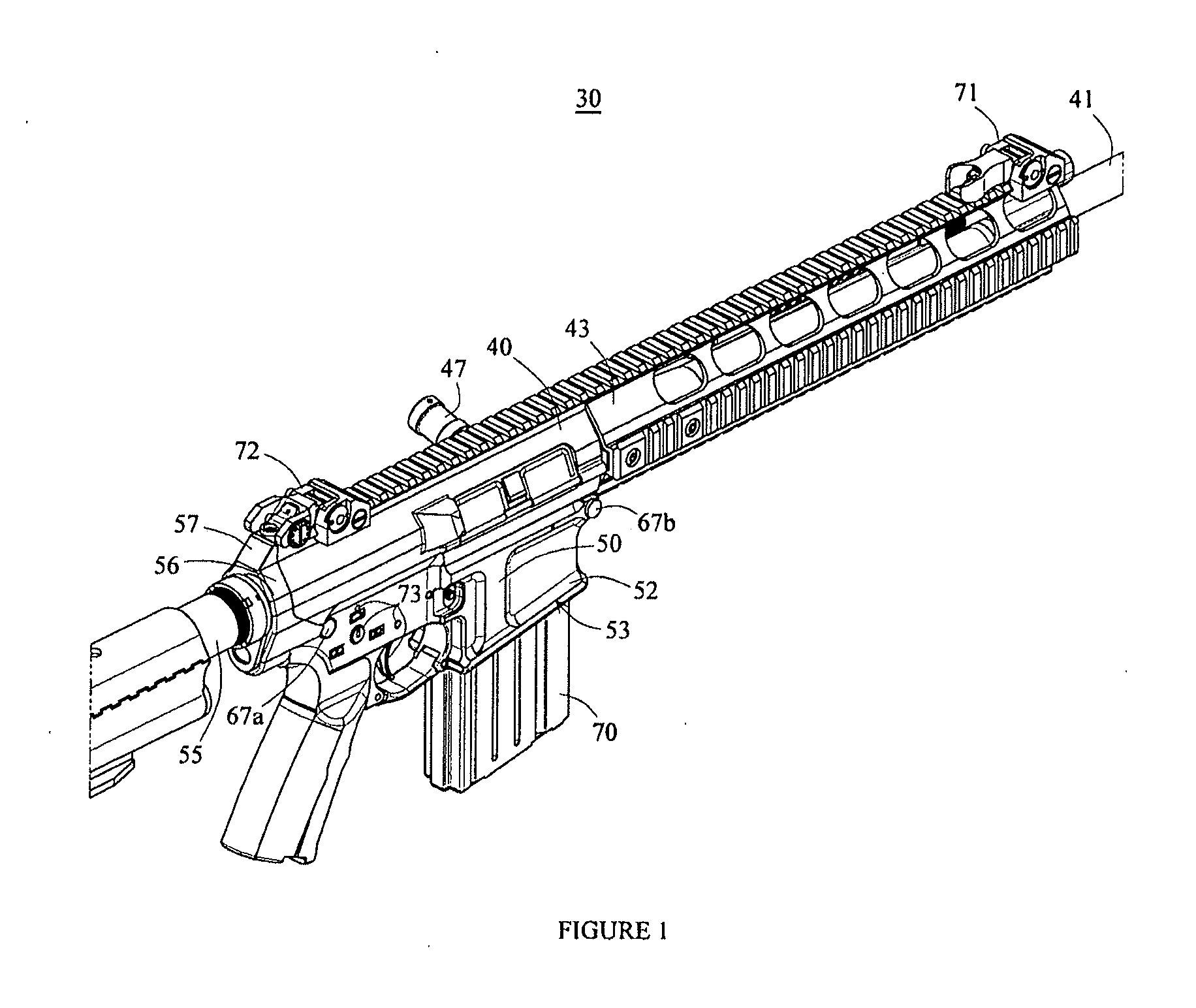Receiver for an autoloading firearm
a receiver and autoloading technology, applied in the field of firearms, can solve the problems of easy damage to the feed lips of the magazine, the design's operable principles have not been significantly improved, and the well of the factory magazine is narrow and easy to miss, so as to increase the margin of error for the user, the effect of dragging on the operating system
- Summary
- Abstract
- Description
- Claims
- Application Information
AI Technical Summary
Benefits of technology
Problems solved by technology
Method used
Image
Examples
Embodiment Construction
[0033]Turning now to the drawings in which like reference characters indicate corresponding elements throughout the several views, as used herein, the word “front”, or “distal” corresponds to the firing direction the assembled firearm 30 is facing in FIG. 1 (i.e., to the right as shown in FIG. 1); “rear” or “proximal” or “back” corresponds to the direction opposite the firing direction of the assembled firearm 30 (i.e., to the left as shown in FIG. 1).
[0034]Unless otherwise specified, the various components which make up the trigger mechanism, buttstock assembly, bolt carrier assembly, barrel assembly are as those found on the prior art M16 / M4 rifles and their various embodiments.
[0035]Referring to FIGS. 1 & 2, there is shown a side elevation view of an autoloading firearm 30 capable of full automatic or semiautomatic fire and incorporating features in accordance with the preferred embodiment of the present invention. Although the present invention will be described with reference ...
PUM
 Login to View More
Login to View More Abstract
Description
Claims
Application Information
 Login to View More
Login to View More - R&D
- Intellectual Property
- Life Sciences
- Materials
- Tech Scout
- Unparalleled Data Quality
- Higher Quality Content
- 60% Fewer Hallucinations
Browse by: Latest US Patents, China's latest patents, Technical Efficacy Thesaurus, Application Domain, Technology Topic, Popular Technical Reports.
© 2025 PatSnap. All rights reserved.Legal|Privacy policy|Modern Slavery Act Transparency Statement|Sitemap|About US| Contact US: help@patsnap.com



